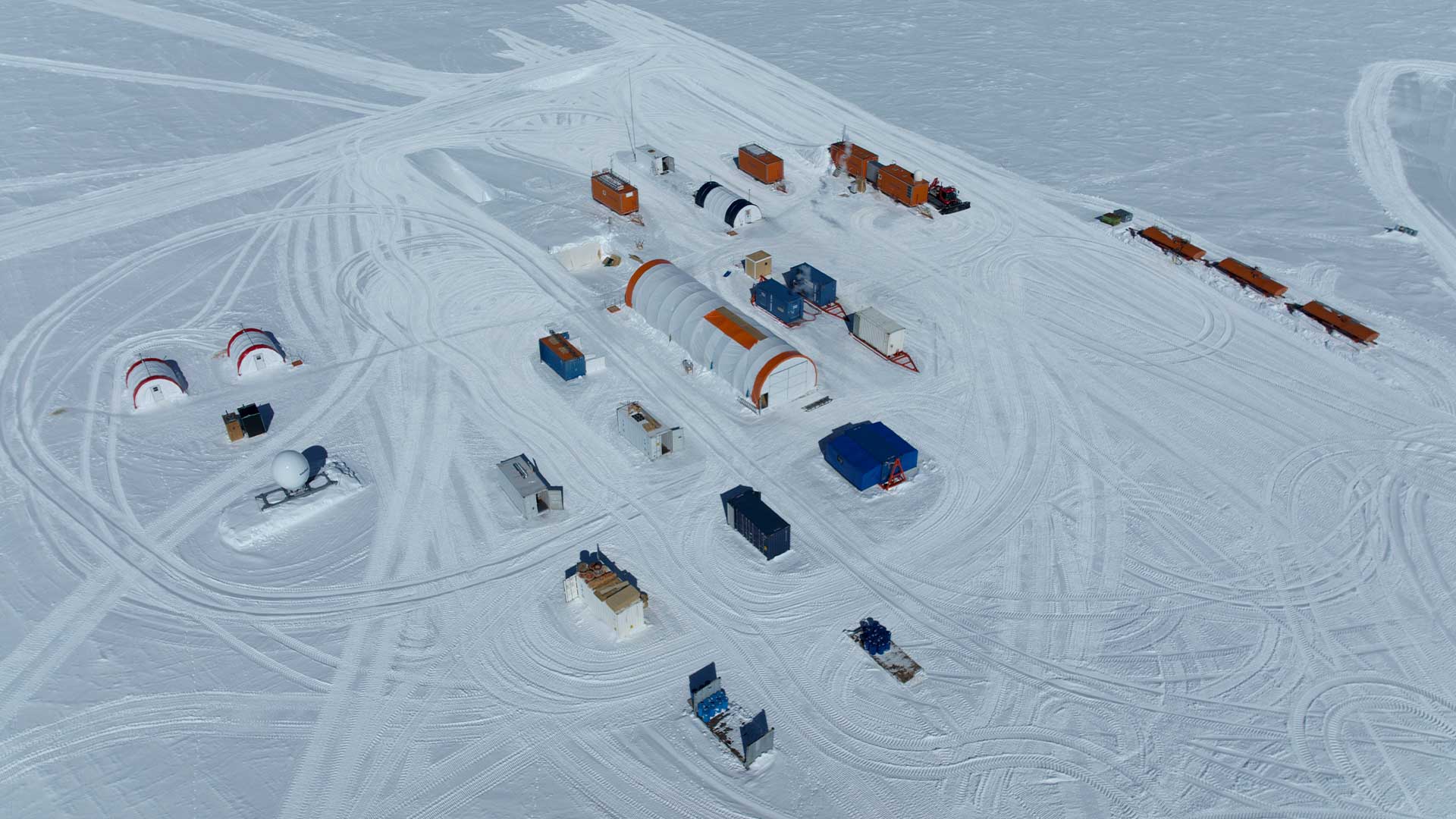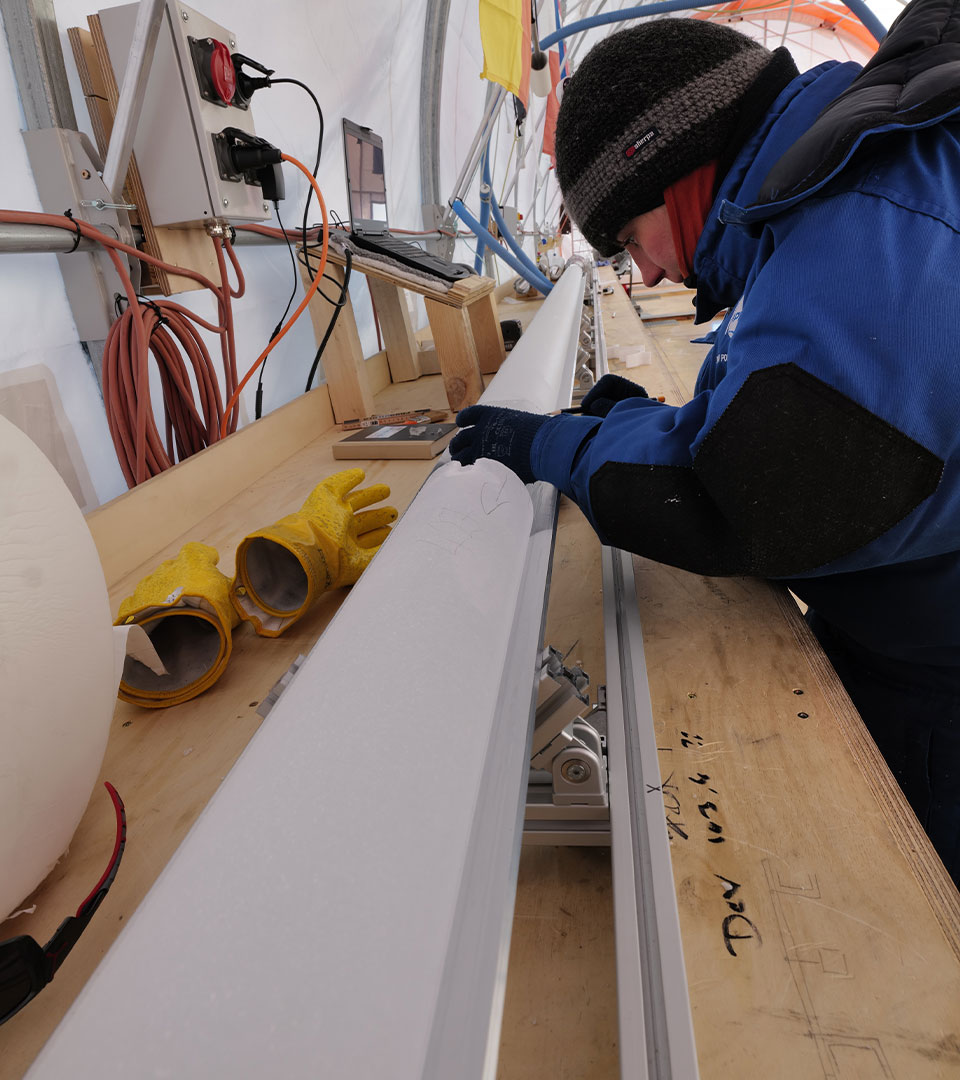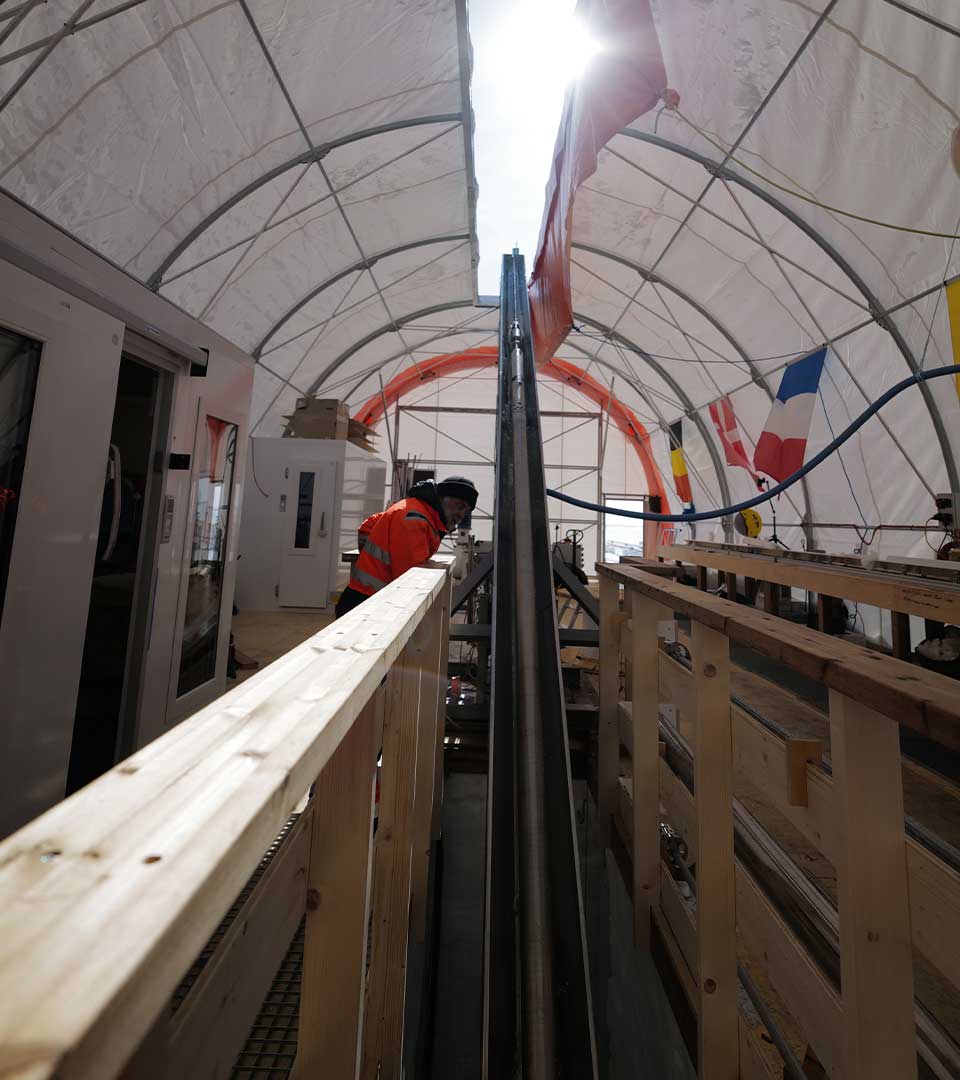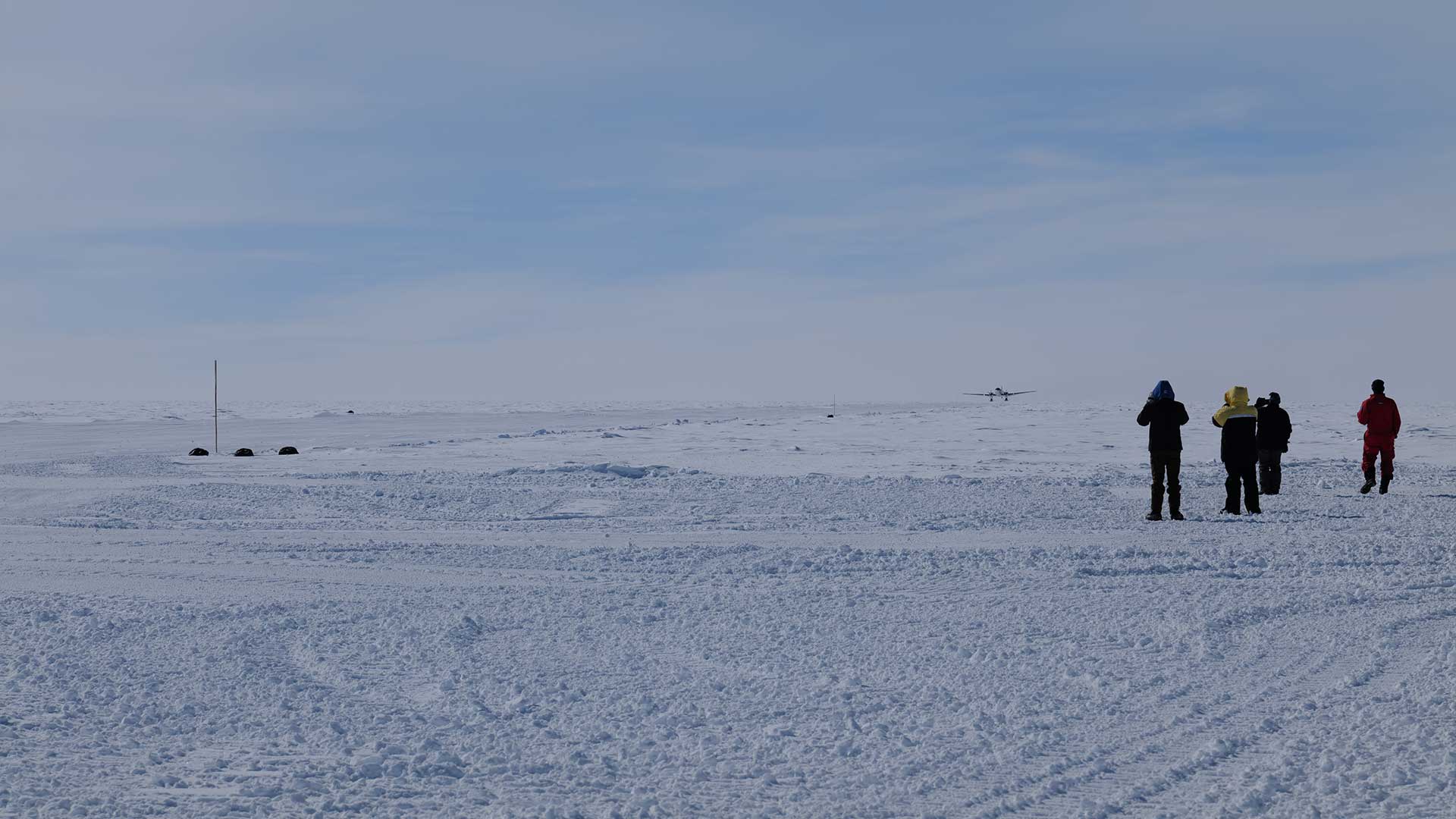The Science of Ice cores
Beyond Epica, coordinated by Carlo Babante and the Institute of Polar Sciences, is an international research project in Antarctica with a mission to conserve the environment.
Location: Antarctica
Date: 15th March 2023
The Science Of Ice Cores:
why are they so important?
By Beyond Epica
The importance of ice and snow in scientific research is by now well-known: we can find relevant information about the climate of the past inside ice sheets and glaciers.
The scientific interest in ice coring started in the mid 20th century and led to the first drilling expeditions in Greenland and in Antarctica, to retrieve important climatic information directly from the ice sheets. Also, high mountain glaciers have been studied as climatic information hubs, leading to important drilling campaigns all over the world.
We have just come back from Little Dome C, Antarctica, which is the site where we are working on the Beyond EPICA project, and here we have extracted 808,47 meters of ice core, which will tell us a lot about the climate of the past. Thanks to the Gitzo products, which we were able to test under very tough conditions in the field, we were able to document our daily life and the drilling activities in the white continent.
Here are some curiosities about ice cores: the Beyond EPICA protagonists!


What’s an ice core?
Ice cores are cylinders of about two-three meters of length and 10 cm in diameter. They can be considered as continuous records of past precipitation, chronologically organized: from the surface, which represents the youngest ice, to the bottom of the ice sheet, which represents the oldest ice.
For this reason, they are considered precious archives for paleoclimatologists: they keep traces of past climatic events of the Earth, and they represent a unique way to go back in time to unveil the past climate of our planet.




How can ice cores tell us about climatic conditions?
The climatic information is trapped in the ice layers that form the Antarctic and Greenland ice sheets, as well as the mountain glaciers.
When the snow falls it accumulates layer after layer: the pressure of the new layers and the extremely cold conditions in the poles and high mountain environments, led to the formation of solid ice. The transformation of snow into ice seals the air bubbles and preserves dust and chemical compounds present in the atmosphere during snowfall: all these are important to reconstruct ancient climates and the temperatures reached in the past.
The presence of Greenhouse gasses like CO2 and methane from the past are thus trapped in the entire ice sheet.
Past temperatures can be reconstructed by analyzing the isotopes forming the frozen water molecules of the ice: they can reveal temperature changes experienced in the past in Earth’s climatic system.
How can we extract them?
Ice drilling technologies allow us to reach the deep ice layers, retrieving information that otherwise would be buried under the ice sheet.
This is possible by using specific and highly specialized instruments, called drills, which allow scientists to reach and collect very deep strata of ice.
The drill digs a hole in the ice sheet, extracting cylinders of ice that subsequently can be analyzed. Different types of drills can be used according to the different ice conditions, different depth and to meet the specific needs of the project in order to obtain the most representative samples. The Beyond EPICA ice cores will be stored frozen inside special boxes and shipped in big freezers to Europe for analyses.




Why do we want to study the climate of the past?
Understanding the processes of climate change is more important today than ever before. From the 50s, we started to collect information about atmospheric composition, but to look farther in the climatic history of our planet, we need to know more. As we don’t have direct records of these chemical characteristics, the ice cores are our precious archives to obtain them indirectly.
Deepening the knowledge of what happened in the past climatic system will allow us to better understand our climate and to put in the correct perspective the changes that we will face in the future.
How far can we go back in time inside an ice sheet?
The oldest ice core has been collected with the EPICA project in Antarctica, getting ice samples 800 thousand years old!
But we now want to go further.
The Beyond EPICA drilling project, in a new Antarctic site called Little Dome C, could reach ice that can be as old as 1.5 million years. It would break an unprecedented record, accessing a geological age called “Mid-Pleistocene”, when the Earth had to face a drastic climatic change.


Why do we want to reach 1.5 million years ago?
An ice core can be read like a book: each layer is a page telling the history of the climate, and if the layers are well preserved, you can find unique information.
Going back to 1.5 million years ago with the Beyond EPICA project, we want to cover the climate history of the Mid Pleistocene Transition (MPT) and beyond, to understand which constraints led to the shift in the cyclicity of glacial (cold) and interglacial (warm) periods, making the climate variation more extreme: thick ice caps covered the coldest areas of the Earth in glacial periods and the cooling and warming processes became slower.
What caused this change?
The causes of this change are still a mystery.
The scientific community made different hypotheses about the reasons that led to this transition, and the Beyond EPICA Oldest Ice core could obtain the information needed to know more about the atmospheric composition of this period, between 1.2 million years and 800 thousand years ago.
The Beyond EPICA Oldest Ice Core project will contribute to increasing this kind of knowledge within the paleoclimate scientific community.
The information will be compared and combined with other previously collected, to further expand our knowledge on past climate variations and on the forcings which determined climatic oscillations. A better understanding on how the Earth’s climate has evolved will also allow us to produce better climate models in order to predict future variations.
Click the link to know more about Beyond EPICA adventure: https://linktr.ee/BeyondEpica_OldestIce



























